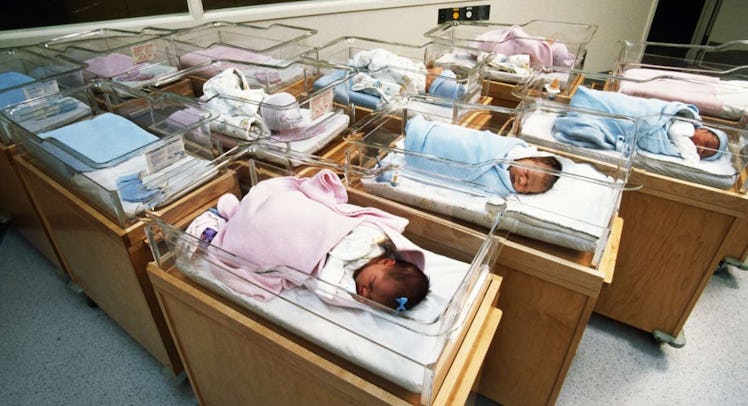Baby Sleep Tips From the Maternity Ward
Don't worry about losing sleep. You're going to no matter what you do.

Few people in this world know more about getting babies to sleep than nurses working in maternity wards. They spend every day cajoling screaming, writhing, terrified humans — and also making sure their newborns get comfortable. What they do is super impressive, but it isn’t magic and it’s not even particularly difficult for people willing to follow their lead and put in some time practicing. Like every sport ever, getting newborns to sleep is all about the fundamentals and those fundamentals are the “Five S’s,” developed by Happiest Baby founder Dr. Harvey Karp.
“The Five S’s is actually what you see the nurses do,” says 20-year maternity ward veteran Christy Brook, who works as the neonatal clinical nurse educator at Legacy Randall Children’s Hospital in Portland, Oregon. “The only difference is that we do it all the time, so we’re really good at it.”
The method is essentially a cycle of steps that lead to soothing and sleep. It begins with swaddling then holding the infant on their side or with their stomach down (count side and stomach as one S, BTW). Once in that position, they can be shushed to, swung gently, and given something to suck. These steps are applied in order as necessary. But, even before that, Brook says it’s critical that parents start with calm. Yes, she understands that it’s hard to stay zen when an infant is hollering. But nothing works without calm. Calm is the ball control of infant sleep. Game plan won’t work without it.
Beyond all the S’s, a lot of getting a baby calm comes down to self-confidence. That’s a trait that not only helps parents focus, but also reveal the knowledge that they already have about how to care for their child. With a calm mind, much of the techniques seem to flow.
“As a new parent, (sleeplessness) throws you off. Your energy gets up and the babies respond to everything around them,” Brook says. Instead of getting tense she suggests parents act with confidence. “Do what you already know to do: Burp the baby, feed the baby, change the baby. So much of it is just learning to breathe.”
Erika Bohn is a mother of two who recently completed her first year as a labor and delivery RN at Denver, Colorado’s Presbyterian St. Luke’s Medical Center. She recommends supplementing tried-and-true cradling and swaddling methods with tactical physical contact, essentially helping a restless infant sleep by emulating womb-like sensations.
“I pat their backs. Sometimes I do it in a double-beat, kind of like a heartbeat,” Bohn says. “I don’t want to say to do it forcefully, but a strong pat seems more calming and reassuring to them, almost like a physical distraction that helps them stop crying and fall asleep.”
Any kind of repetitive touch can lead to calmer transitions into slumber. That could include circular rubbing of the head, or caressing the earlobe between the thumb and forefinger. The trick is to try as many methods as possible to see what works best. It can get weird.
“Rubbing across the forehead real gently and slowly makes them close their eyes almost immediately,” Bohn says. “The younger they are, the better it works. It’s funny because as I kid I used to pet my cat kind of like that — sometimes down the nose too, kind of that t-zone across the eyebrows and down the nose. It works really well.”
Finally, parents shouldn’t be alarmed with a lack of sleep when their babies come home. It’s instinct for parents to believe that there’s something wrong with a child who doesn’t sleep. There isn’t. They just have crazy short sleep cycles. So sometimes the best intervention is none at all. They might put themselves back to sleep. If not, get jiggling.